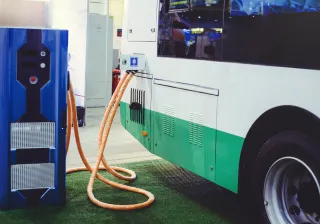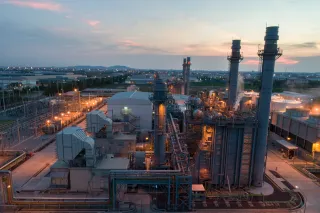Cities around the world face high expectations for lowering CO2 emissions. Electrification of public transportation plays a key role but requires a set of complex decisions. VTT’s webinar shed light on these issues, considering experiences from Helsinki, Finland and Santiago, Chile and possibilities of VTT’s Smart eFleet toolbox for guiding cities along the way.
Public transportation system is an essential part of our daily lives in urban environments. There is a growing need to transform these systems, with focus on sustainability, cost effectiveness and user experience. A system approach through simulation of different scenarios is a must. “VTT Smart eFleet is a science-based toolbox and consultation service designed to help cities in this transition since the very beginning”, says Yancho Todorov, Research Scientist at VTT.
E-buses must meet a variety of high expectations: they must offer the same operational reliability as diesel buses but improve the customer experience, and also meet ambitious emission targets and high energy efficiency standards. At the same time, the fleet solution must be cost-optimised. VTT Smart eFleet helps to design and build an electrified transportation system that meets these expectations. It supports the decision-making along the way, based on experimental data, and ensures the best, cost-effective decisions.
From Helsinki...
Helsinki Region Transport is responsible of public transportation system covering 9 municipalities with 1,3 million inhabitants. It aims to drive down the emissions of this system by more than 90% by 2025. Electricity as an energy source in the bus fleet is one of the main factors for reaching this goal, says Project Manager Ville Uusi-Rauva from Helsinki Region Transport.
VTT has been supporting Helsinki Region Transport’s journey to electrification since the first pilot e-buses. There were quite a lot of problems in the beginning, especially in the winter, and it became evident that the charging process must be included in the plans. VTT followed the process closely: Smart eFleet toolbox was created by using the data gathered in Helsinki region and validating it.
In 2021, there will be 142 e-buses operating in the Helsinki Region, which is equivalent of almost 11% of the bus fleet. The goal is to have 400 electrified buses by 2025, which is 30% of the fleet. “We are only starting our journey towards electrification and need to be up on the wave of the technological development”, says Uusi-Rauva.
...to Santiago
Santiago de Chile is one of the largest cities in South America. Santiago’s public transportation relies on extensive metro and over 7000 buses in daily circulation. The city is surrounded by mountains, which means that that emissions are captured in the environment, causing problems with air pollution. This was one of the drivers behind Santiago’s electric bus pilots, which started in 2013 and expanded fast.
In the end of 2020, Santiago had almost 800 electric buses in regular operations, and up to 1,670 additional units tendered, says Sebastián Galarza, Transport and energy sector lead at Centro Maria Molina in Chile. “This is the largest e-bus fleet in any city outside China”, Galarza points out. But there is still work to be done: the goal is to electrify the entire public fleet in Santiago by 2035, and in the entire country of Chile by 2040.
Centro Maria Molina in Chile has been planning the transition in close cooperation with VTT, using the Smart eFleet simulation toolbox. Simulation helps to decide which routes have most potential from techno-economical point of view, where to operate and what kind of specifications should be set for the buses, says Galarza.
Prepare for the unexpected
Helsinki and Santiago offer two quite different settings for public transportation. However, the main issues in electrification are similar in both cities. One of the most important decisions is the charging infrastructure. The main options – over-night depot charging and opportunity charging – each come with related risks and opportunities that depend on the type and location of the vehicles. Simulation is essential since all factors cannot be examined through piloting.
Helsinki Region Transport relies mostly on over-night depot charging, although opportunity charging is used as well. Charging infrastructure is one of the considerations when new fleet is tendered: Helsinki Region Transport sets the target level while the operators offer their solutions to meet these goals.
Even with careful planning, there might be surprises when the e-buses hit the road. In Santiago, for example, one of the charging stations was located at high altitude. It turned out that rolling down the hill from the station after charging regenerated a lot of energy. This discovery led to a change in the charging strategy: not charging the batteries completely resulted in important savings, Galarza explains. VTT Smart eFleet can be used to increase the predictability of these situations and different scenarios.
How far should you go?
Another key question in the electrification of transport systems is the scope of the project: to what extent should the fleet be electrified and where? The short inner-city routes are the easiest, but not the only ones. Helsinki will soon start to operate the first trunk routes and relies on simulation and data for their optimisation. At Santiago, with a lot higher number of routes, these simulations are essential.
Cost-effectiveness is yet another angle. According to the data from Santiago, fleet electrification is, in effect, economically viable. It has proved to bring operational savings and maintenance savings compared to diesel buses. “E-buses are viable today and the technology shows enormous progress each year. Future seems bright”, Galarza concludes.
Do you want to know more?








